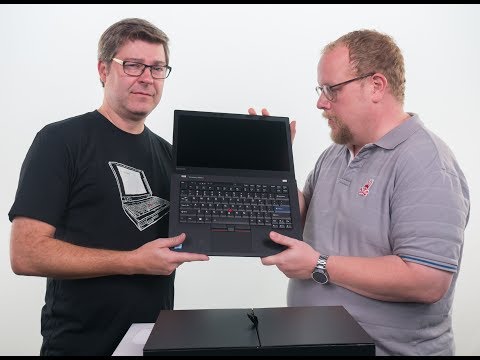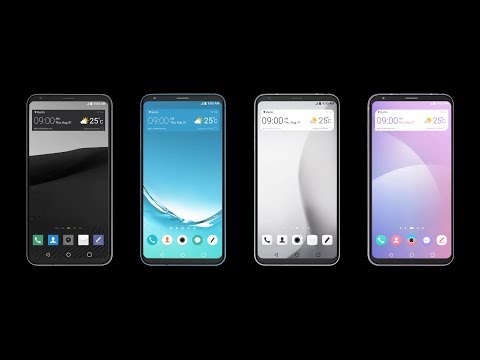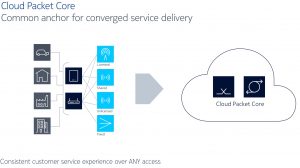I often get asked by friends and family whether we will ever get rid of the wires in our lives. As most of us in the industry are aware, no single access technology, either wireless or fixed, will meet consumer and enterprise demands — not to mention national bandwidth mandates. It will take multiple access technologies working in harmony to achieve a seamless ultra-broadband service experience. This is especially true at the edges of some urban and suburban locales and in many rural markets. But in order to make this kind of hybrid access possible, we will need to evolve our network cores to intelligently leverage a range of multi-access technologies.

Figure 1: Common anchor for multi-access
It may come as a surprise to realize that almost half the world’s population live in areas that are underserved from a broadband prospective. It is estimated to be a potential $80 billion1 market worldwide. These areas may be served by only one kind of wireless or only fixed access, and may have no connectivity at all. For any number of reasons, it is important for us to find a sustainable and affordable way to connect this “next billion” users.
For various business, geographic and technical reasons, the use of a single access technology may not be able to meet even current needs, let alone future targets. Hybrid approaches that aggregate different access technologies will be the only way to cost-effectively and, thus, sustainably meet the needs of the next billion.
Supporting multi-access services has been challenging; we often have different physical cores for fixed and wireless networks. So, the capabilities of a converged core must evolve and be augmented to ensure the delivery of the desired converged services. This converged core must address everything from evolving residential multimedia services, such as wireless video sharing and the Netflix-bingeing we all love, to latency sensitive real-time gaming and mission-critical applications for governments and enterprises, including IoT and critical machine-to-machine (MTC) communications.

A multitude of multimedia services and applications
A multi-access core will enable service providers, as well as vertical enterprises and industries, to boost bandwidth and increase their footprint and revenue to include currently under-served markets. It will also provide highly secure and reliable networks that utilize dynamic policy control for flexible bandwidth management, which is critical for sustainability.
An enhancement to a well-known reliable transport protocol is making multi-access aggregation possible. It is an evolution of TCP called multi-path TCP or MP-TCP. Because it’s an extension of TCP, it can be easily deployed in existing wireless and fixed access networks. For bandwidth-intensive services and applications, MP-TCP hybrid access creates sub-flows that spread data for a single connection across multiple network paths. As we shift our behavior over the day or evening, network policies can seamlessly allocate and manage wireless and fixed resources to efficiently match our demand — especially critical for scarce rural connectivity.
As well as supporting MP-TCP, the converged multi-access core will have to be ‘cloud-native’ by design to deliver the necessary scale and flexibility to support a very diverse set of connectivity types, services and applications. What I mean by cloud-native is that it can’t just be a simple port of existing software onto a server platform. The software must be architected to support attributes such as software-function disaggregation. That’s where the virtual network function software is modularized and broken down into small components that can then be scaled dynamically in a building-block approach, as necessary.
For increased flexibility and reliability, a cloud-native design also requires a state-efficient, virtual-network-function (VNF) design with a common data layer. Meaning in other words, massive connectivity to support huge numbers of IoT and MTC devices while maximizing the use of computing resources to realize the economics of delivering diverse and demanding services and applications. This is one of the strengths of a true cloud implementation. Also for bandwidth-intensive or delay-sensitive IoT/MTC applications, it should also be possible to distribute the appropriate disaggregated core functions to the edge of the network to support real-time services and applications.

Utilizing fixed and wireless capacity with MP-TCP hybrid access
So, let’s consider the Nokia Hybrid Access solution. It has two main components; the Hybrid Access Gateway (HAG), and the Hybrid Access Customer Premise Equipment (HCPE). With Nokia’s Cloud Mobile Gateway (CMG), the HAG capability can be deployed with existing vendors’ fixed and wireless access infrastructures, so it’s suitable to meet a range of business and deployment requirements. The Nokia Broadband Network Gateway (BNG) — already deployed in many of our customers’ networks — also provides a potential further upgrade path that they may wish to consider. Either option supports virtualized or physical network element environments.
There’s a lot of talk these days about digital transformation and the 4th industrial revolution, or “4IR” as it is sometimes called. A cloud-native, multi-access core will be at the heart of this transformation. It will provide the core platform for a global interconnected fabric connecting the world, including that half of the world that is underserved today. Enterprises will require it to take full advantage of a wide array of networked and automated systems and applications. And, for CSPs, it will enable them to competitively profit from the growing appetites of under-served consumer, residential and enterprise users as well as meeting the ambitious broadband targets set by governments globally.
Check out this video on why we think hybrid access is the way to go:
1:Broadband transformation for 21st century digital rural society (Nokia, 2016)
Visit our Nokia cloud mobile gateway solutions page for more information.
Share your thoughts on this topic by replying below – or join the Twitter discussion with @nokianetworks using #5G #cloud #cloudnative #IoT
The post Ultra-broadband is an $80B opportunity for the multi-access core appeared first on Blog | Nokia.

Source: Nokia Networks
—














 You’ve been on the workout grind, but you’re ready to add an extra challenge without shelling out for a personal trainer or buying a bunch of new fitness equipment. You’re in luck; there are actually some pretty simple techniques you can use to boost the effectiveness of your workouts instantly. Bonus: They help you save time at the gym! Here are five to try during your next workout:
You’ve been on the workout grind, but you’re ready to add an extra challenge without shelling out for a personal trainer or buying a bunch of new fitness equipment. You’re in luck; there are actually some pretty simple techniques you can use to boost the effectiveness of your workouts instantly. Bonus: They help you save time at the gym! Here are five to try during your next workout:



